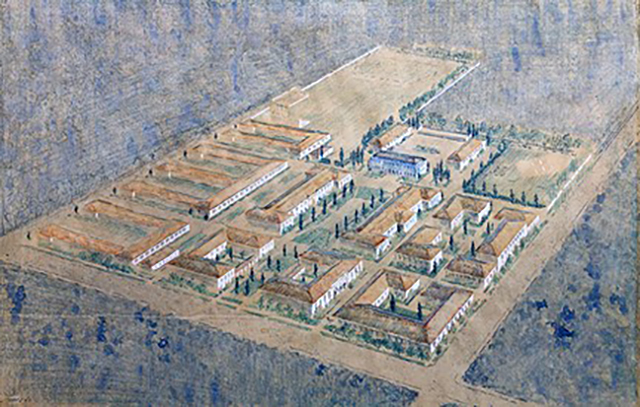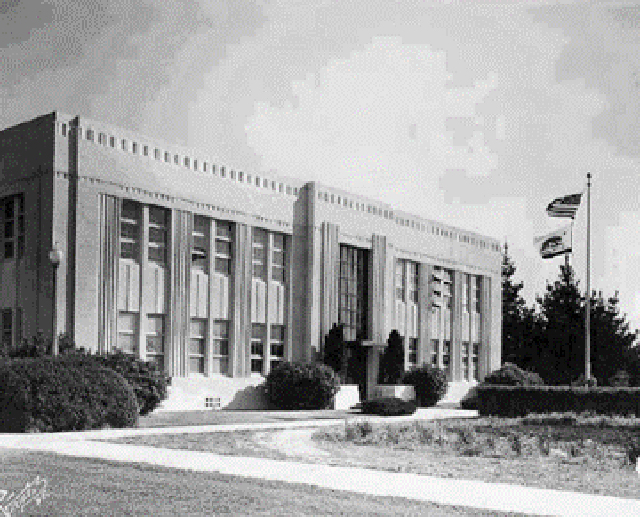Delaware
Depression-era San Mateo Junior College learned that while new buildings are important, what’s more important is the community they hold
The people of San Mateo Junior College thought they would finally get a campus of their own in 1936 when trustees bought 40 acres for that purpose on Delaware Avenue, next to San Mateo High School.
The Great Depression and other ill fortune kept all but two buildings from being built there. Students until 1963 kept shuttling between this and other locations.
They learned that while new buildings are important, what’s indispensable is the community they hold.
For their Delaware campus, trustees chose architect George W. Kelham, who had already designed big chunks of UCLA and UC Berkeley. Kelham was famed for blending any style of the past with Art Deco, the last word in 1930s modernity.
For San Mateo, he designed a dozen gleaming Greco-Roman-Art Deco buildings including science labs, a theater and trade-technical shops.
Student athletes, musicians and actors who scrambled to borrowed facilities from Belmont to Burlingame were thrilled that they would have classrooms, theater and sports fields in one place.
They claimed the new space by building their 1936 football bonfire—an especially large one—on Delaware’s bare ground.
In 1938, Delaware’s science building opened, then a shop building for the College’s growing building-trades curriculum. The rest was not to be.


Trustees had gambled that San Mateo County voters would approve a countywide college district, doubling the assessed property valuation that could be tapped for construction costs. Instead, only Half Moon Bay and Daly City voted to join. (Sequoia and South San Francisco high school districts joined the district in 1961 and La Honda-Pescadero in 1976.)
As the Depression lingered, civic leaders begged college trustees not to float construction bonds, apologizing for residents’ inability to pay. The College was forced to lay off staff in 1935 after San Francisco, then Oakland, opened community colleges, costing SMJC nearly a third of its students and, with them, state funding based on daily attendance.
Keeping the remaining students housed and fed became a more pressing concern. Prof. Frank Taggart ran a federally funded New Deal program that paid 82 students to do jobs like supervise elementary-school playgrounds and maintain parks and grounds. Many San Mateo families took in students so they could stay in school. Carlena Morris, wife of college President Charles S. Morris, and the campus Mothers’ Club opened two boarding houses for male students who would otherwise be homeless. Meanwhile, classes other than science and shop continued to meet in the former San Mateo High buildings on Baldwin Avenue.
In a further blow to the campus plans, architect Kelham died suddenly in 1936 of a heart attack.
America entered World War II in December 1941, further depleting SMJC’s enrollment and seizing the nation’s complete attention. When the war ended in 1945, the Delaware plans were already outdated and the acreage too small. Trustees took over the nearby Merchant Marine training school at Coyote Point to cope with a postwar student overflow. Students shuttled not between two, but three campuses.
In the hardship, the community came together. Though the college was far-flung, the fact that it had many locations exposed more people to the college, its virtues and its needs. Gifted leaders including the Morrises and future trustee Eleanore Druehl Nettle worked hard to unite the campuses in spirit.
Nettle, Class of ’31, served during that Depression era as president of the Associated Women Students. Twenty-five years later, Nettle was elected to the Board of Trustees and led the drive for CSM’s current College Heights campus. Delaware was sold for $2.2 million in 1963, the year College Heights opened

